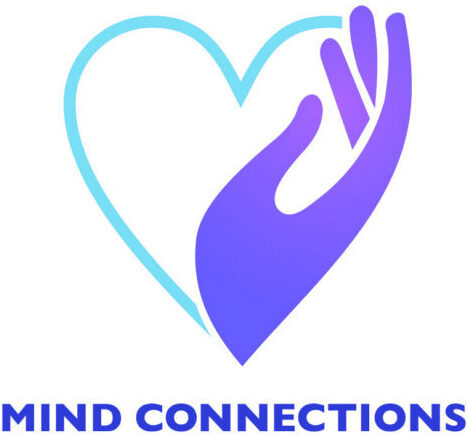Tips to Help Your "Smiling" Friends to Deal with High Functioning Depression
You may know typical symptoms of depression, sadness, loss of interest, agitation and irritability, low motivation, and low energy. However, sometimes you may not see these symptoms in a depressed friend. Instead, smiling face, joking around, going to work or school as usual; and yet, all sorrow and emotional pain that are hidden deep inside would manifest when they are alone. The so-called smiling depression, sometimes high-functioning depression, can be really dangerous.
What is “High Functioning Depression?”
As mentioned in one of our previous articles, the National Mental Health Institute reported in 2017 that about 17.3 million adults in the US experienced at least one major depressive episode. We explain more about the different types of depression in our article here if you want to learn more!
Some people have what is referred to as “High Functioning Depression.” Meet Mia – Mia is friends with Matteo. She relates to his struggles with depression and sadness, but no one would ever really know if they weren’t looking too closely. Mia is the friend who always knows how to make everyone else feel happier after talking with her. She has a smile on her face and hides her symptoms very well; no one would know that Mia is suffering under the surface.
More About Persistent Depressive Disorder (PDD)
Mia believes she has “High Functioning Depression.” Although this is not an official diagnosis, High Functioning Depression is most closely related to Persistent depressive disorder (PDD) (aka dysthymia or chronic depression).
According to the Mayo Clinic, PDD is believed to be milder than major depressive disorder; the “symptoms usually come and go over a period of years, and their intensity can change over time.” When the signs of high-functioning depression are more manageable, it could be hard to tell that someone with PDD has been struggling.
People with PDD may appear to be doing well and thriving despite their underlying emotions. The mother of Cheslie Kryst, the late Miss USA, reports that her daughter battled this type of depression. Cheslie modeled, worked as a lawyer, and became Miss USA without people knowing she was struggling. It would be challenging to tell Cheslie had signs of high-functioning depression.
Why Do People Hide Their Emotions?
The struggles of someone with depression may fly under the radar – some people can hide their signs of high-functioning depression well and keep people at an emotional distance. You may wonder why people hide their emotions under a smile. You wish your friend would open up about their feelings instead of keeping them to themselves.
Here are some reasons why people may choose not to share how they are feeling inside:
1. People-Pleasers and Perfectionists
As mentioned in our past article, people-pleasers are people who often put others’ needs before their own. People-pleasers are too busy helping others to prioritize themselves. People-pleasers may fear that their problems or worries will bother the people around them. They are so used to caring for others that they feel uncomfortable with the idea of opening up and becoming vulnerable. Sharing their signs of high-functioning depression seems intimidating.
Perfectionists might also struggle with sharing their emotions. Perfectionists fear failure and disappointing others. They may worry that sharing their feelings will make them seem “weak” to others.
2. The Fear of Being “Too Much” or a “Bother”
Many people fear that others will be bothered if they ask for help. They worry that opening up and asking for support will be too much for someone else to handle. Others fear they will open up to people who invalidate and criticize their emotions.
These worries can stem from childhood neglect from parents of family members – kids opened up to their loved ones about their feelings only to be dismissed or told to “toughen up.” Their inner child may be scarred from these experiences and in need of healing. They fear being met with the same disdain if they tell people about their signs of high-functioning depression.
3. Fear of Being Stigmatized
Unfortunately, mental health stigma is still present in our society. According to the National Alliance on Mental Illness (NAMI), most people with mental health illnesses have been blamed for their conditions at some point.
People fear expressing their emotions or mental health concerns because they don’t want to face stigma or discrimination. Mental health stigma is dangerous because it can prevent people from getting the help or support they may desperately need.
Tips to Help a Friend with High-Functioning Depression
Sharing your emotions, being vulnerable, or discussing the depressive symptoms you face can be difficult. Anyone struggling with these emotions, know that you are not alone! You are not weak for going through these experiences, and you are so much stronger ad resilient than you may ever believe. You deserve to get the support you need!
1. Check In With Your Friends with High-Functioning Depression
Sending a text, making a phone call, or speaking a simple, “How have you been?” can really make a difference in someone’s day. Some people, as mentioned before, struggle to open up and share what’s really going on in their lives. By asking your loved ones how they are doing in a friendly and supportive way, you are opening up a channel and opportunity for honest communication.
Even if your friend seems fine and says they are doing well, remind them that you are always there if they need someone to talk or vent to. They may not be ready to communicate how they are feeling now, but they may take you up on your offer later.
2. Help your Friends to Reduce Stigma about Depression and Mental Health
As mentioned before, typically the major reason for people to hide their depressive symptoms is lack of awareness, shame, guilt, and stigma about depression and mental health. The way to fight stigma is to
- Show compassion for others. Let them know that they are not alone. Many of us are there for them and with them to manage their depression.
- Openly talk about depression and mental health. By doing this, the topic of depression is not embarrassing to discuss any more.
- Educate people about typical signs and symptoms of depression, treatment options, and outcomes. Help them to understand mental health should be treated equally as physical health.
- Empower people to use their strengths and rely o community to fight depression.
3. Watch What You Say
Mental Health Stigma prevents many people from discussing their experiences and finding the support they need. Be mindful of what you say to others – you never know what an impact your words can have on someone else.
For example, someone in your life may be struggling with anxiety. If this person hears you saying that “people with anxiety are weak” or “should just get over their worries,” they might feel unsafe expressing their emotions to you. Challenge your thoughts:
- Why do you feel like people with anxiety are weak?
- How can you be more empathetic to others?
- What changes can you make so that your loved ones feel safe talking to you?
Sometimes, we need to look within ourselves and examine why we may feel a certain way. For example, a homophobic parent needs to look within themselves and change their preconceived/biased notions about the LGBTQ+ community to save their relationship with their child. LGBTQ+ people deserve to be supported and loved for who they are, not forced to be changed to be accepted.
Watch what you say about mental health around your loved ones. Instead of being negative about mental health struggles, share encouraging words to let your friends know they can open up to you.
4. Be a Safe Space for Loved Ones With Signs of High-Functioning Depression
To help your friends in need, ensure you are open to their emotions and foster a safe space for them to be themselves and receive support. Here are some ways to do so:
- Remind your loved ones that you are there to help and support them
- Encourage them to speak honestly about what they’re going through
- Ask them what kind of support they need at the moment:
- Sometimes people need advice, and other times, they are just looking to vent to a friend
- Help your loved one find resources for support like therapists near them or support groups they can join
- Know that it is okay not to know what to say
- Sometimes your friend will share their feelings with you, and you will not know exactly what to say. That is okay! Being there for them and allowing them to share their emotions can mean a lot to your loved one. Offer to help them find the resources that can provide them with the proper support they need
5. Consider Therapy
If you relate to Matteo, Mia, or Cheslie, know that you are not alone! Therapy can help you deal with symptoms of depression and find support. Please check out our resources for coping with depression and finding a therapist to talk to. At Mind Connections in New York, NY, our depression specialists use evidence-based therapy approach like cognitive behavioral therapy (CBT) and mindfulness to help you.
Mind Connections has a resource page with suicide prevention hotlines. Below is more resource information. Click the link to find more!
- The American Foundation for Suicide Prevention (AFSP) lists many resources:
- National Suicide Prevention Lifeline: 800-273-8255
- Crisis Text Line: Text TALK to 741-741
- The Trevor Project (LGTBQ+ Support): 1-866-488-7386
- RAINN National Sexual Assault Hotline: 1-800-656-HOPE (4673)
Content Creator, Victoria Gallo; Reviewed by Dr. June Cao







High functioning depression, I call it smiling depression. Even my family do not see the real me, how depressed deep inside